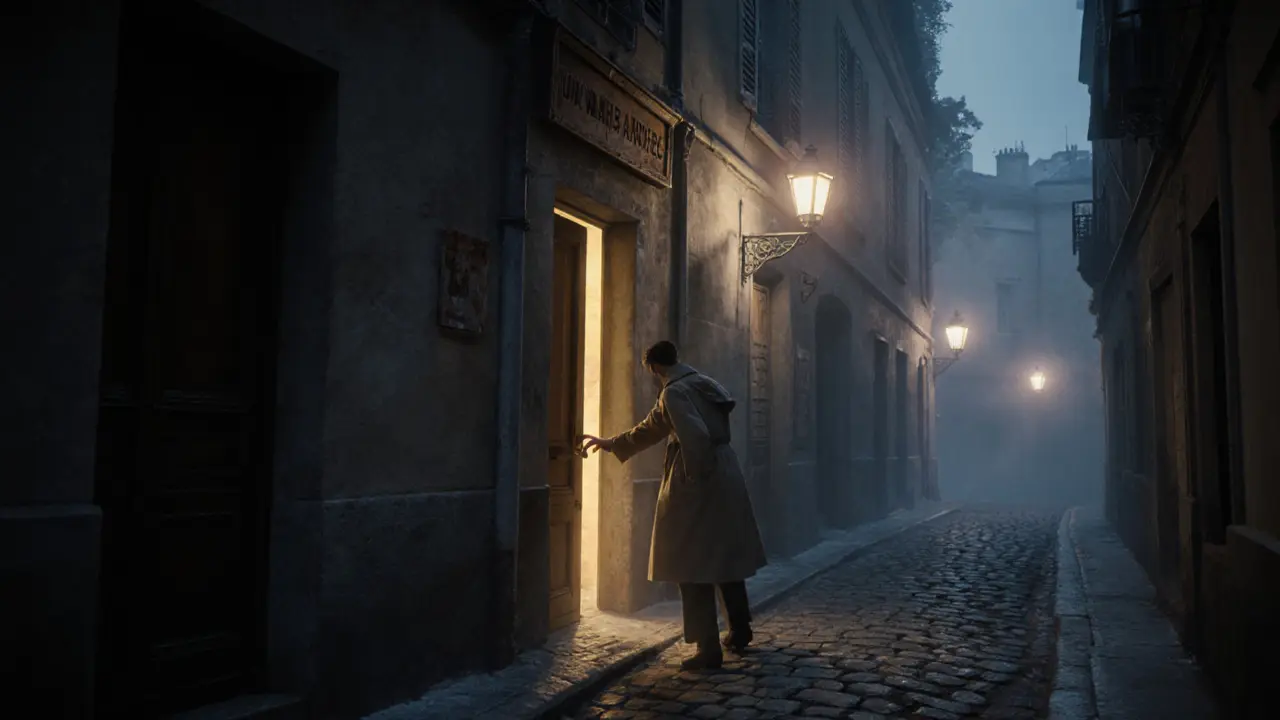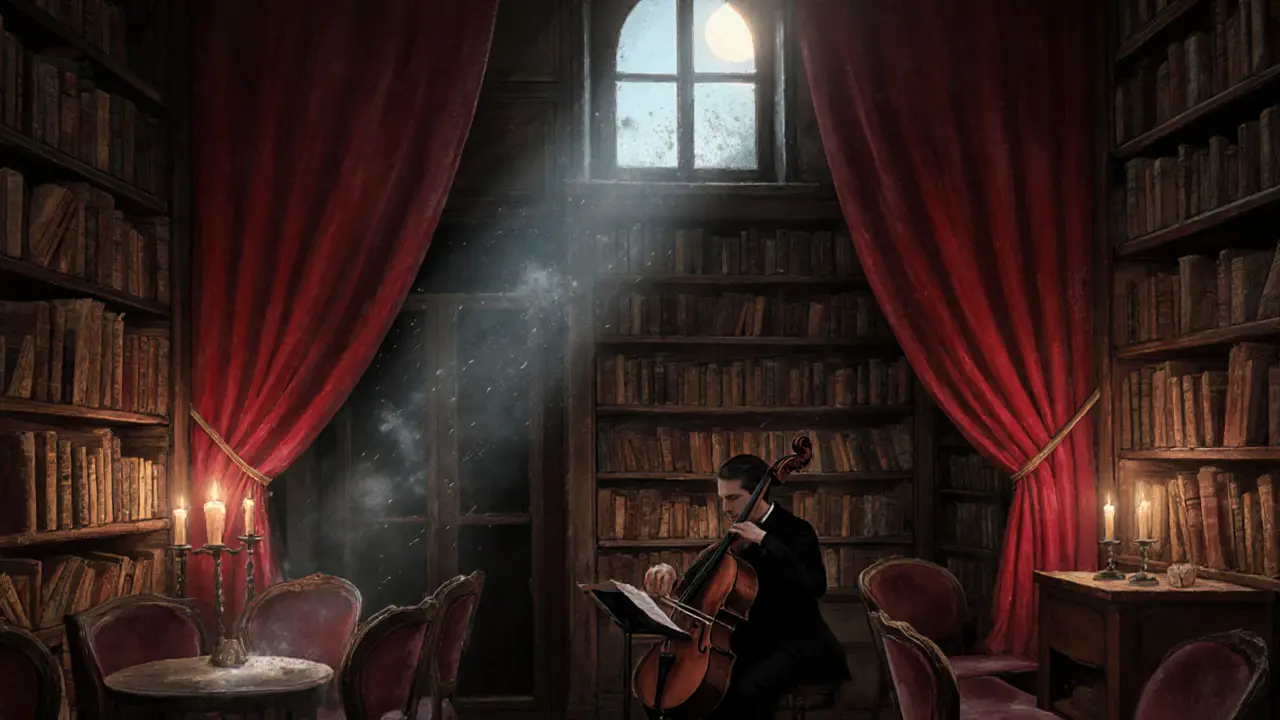Nightlife in Paris: Discovering the City's Hidden Gems

Paris isn’t just about the Eiffel Tower at sunset. By 10 p.m., when the tourists head back to their hotels, the real Paris wakes up. You won’t find it on Instagram ads or TripAdvisor lists. The best spots aren’t marked with neon signs or velvet ropes. They’re behind unmarked doors, down narrow alleys near Montmartre, tucked inside old bookshops in the 11th arrondissement, or hidden beneath a bakery in the Marais. This isn’t the Paris of champagne toasts and rooftop lounges. This is the Paris locals know - where the music is low, the drinks are cheap, and the vibe feels like you’ve stumbled into someone’s living room.
Where the Locals Go After Midnight
Most visitors stick to Le Marais or Saint-Germain-des-Prés, but the real nightlife moves east. In the 10th and 11th arrondissements, you’ll find bars that don’t have websites, don’t take reservations, and don’t care if you speak French. Le Chien de Pêche is one of them. It’s a tiny, dimly lit place with mismatched chairs, a jukebox full of 80s French punk, and a bartender who remembers your name after one drink. No menu. Just ask what’s on tap. Last month, they had a Belgian stout brewed with chestnuts. No one posted about it. You just heard about it from someone who heard about it from someone else.
Down the street, Le Bar du Marché opens at 11 p.m. and closes when the last person leaves - sometimes 5 a.m. It’s run by a former jazz drummer who now makes his own vermouth. The walls are covered in old concert posters. The drinks are named after obscure French poets. You can order a Verlaine Sour or a Apollinaire Old Fashioned. The price? €8. That’s less than a coffee in the 1st arrondissement.
The Speakeasy Scene That Doesn’t Try to Be Cool
Speakeasies in Paris used to mean velvet curtains and cocktail lists longer than your passport. Now, the trend has flipped. The best hidden bars look like they were abandoned in the 90s. Le 1880, tucked under a staircase in the 9th, feels like stepping into your great-aunt’s attic. Wooden shelves hold dusty bottles, some with handwritten labels. The owner, a retired wine importer, pours you a glass of something he distilled himself - maybe a pear brandy infused with lavender from Provence. He doesn’t take cards. Cash only. And he’ll tell you the story behind every bottle if you ask.
Another one, Le Petit Chaperon Rouge, is hidden behind a fake bookshelf in a used bookstore. You need to find the third edition of Les Misérables on the top shelf and pull it. The door clicks open. Inside, it’s all red velvet, candlelight, and live cello music. No one takes photos. No one posts on social media. It’s been open since 2017, and it still has only 12 seats. You can’t book it. You just show up at 10:30 p.m. and hope you’re early enough.
Where the Music Isn’t Loud, But It’s Real
Paris has more live jazz clubs than New York, but you won’t find them on Spotify playlists. Le Caveau de la Huchette is famous, but it’s packed with tourists. Skip it. Instead, head to Le Petit Faucheux in the 13th. It’s a basement bar under a dry cleaner. The owner, a saxophonist from Senegal, plays every Thursday. The crowd? Locals in sweaters, students with notebooks, a retired librarian who comes every week. The music isn’t polished. It’s messy, soulful, and real. You’ll hear a 70-year-old trumpet player improvising over a Congolese rhythm. No one claps between songs. They just listen.
On Friday nights, Le Sucre in the 11th turns into a warehouse party with no sign. You need a password - sent via WhatsApp to a friend who’s been before. The sound system is homemade. The DJ plays only vinyl from the 80s and 90s: French electro, Detroit techno, and rare Italo-disco. The floor is sticky. The lights blink in time with the bass. It’s not fancy. But it’s the only place in Paris where you can dance until sunrise and not hear a single pop song.

What to Eat When You’re Hungry at 2 a.m.
Paris doesn’t have 24-hour diners. But it has something better. La Crêperie de la Gare, near Gare de l’Est, opens at midnight and stays open until 5 a.m. The crepes are made fresh, the butter is real, and the salted caramel filling is homemade. You’ll see construction workers, clubbers, and night nurses all eating side by side. A simple galette complète - ham, cheese, egg - costs €6.50. You can eat it standing at the counter while the radio plays French rap.
Or try Le Comptoir du Relais in Saint-Germain. It’s a tiny bistro that turns into a late-night snack bar after 1 a.m. The chef, a former chef at Le Meurice, makes duck confit tacos with pickled radishes. He doesn’t advertise. He just puts a chalkboard outside: “Tacos à 23h.” You show up. You eat. You leave. No one asks for your name.
How to Find These Places Without a Guide
You won’t find these spots by Googling “best bars in Paris.” They don’t have Google Business profiles. Here’s how real locals find them:
- Walk without a destination. Pick a neighborhood you’ve never been to - like Belleville or Charonne - and wander after 9 p.m.
- Look for places with no sign, or just a small wooden plaque. If it looks like it might be closed, go in anyway.
- Ask the barista at your morning café. Say: “Où vont les Parisiens le soir?” (Where do Parisians go at night?) They’ll give you one name - not five.
- Follow the music. If you hear live jazz, funk, or acoustic guitar drifting out of a basement, follow it.
- Don’t check your phone. If you’re looking at Instagram, you’re not seeing the real thing.
Most of these places don’t even have Wi-Fi. That’s the point.

What to Avoid
There are plenty of places that look like hidden gems but are just marketing tricks. Watch out for:
- Bars with “secret” in the name - if they’re advertising it, it’s not secret.
- Places that require you to RSVP on Instagram or follow them to get the address.
- Clubs with velvet ropes and bouncers checking your outfit. If you need to dress up, it’s not the real thing.
- Any place that plays Ed Sheeran, Drake, or Taylor Swift after 11 p.m.
Parisian nightlife isn’t about being seen. It’s about being present.
When to Go
Weekends are crowded. If you want the real experience, go on a Tuesday or Wednesday. The locals are off work. The bars are quieter. The music is better. The bartender has time to talk. You’ll get a better drink. You’ll hear a better story.
And if you’re lucky? You’ll leave before sunrise, walking past empty streets, the smell of fresh bread from a bakery opening up, and the echo of a saxophone still ringing in your ears.
Are Paris nightclubs safe for tourists?
Yes, most local spots are safe, especially in neighborhoods like the 11th, 10th, and 13th. Avoid areas near the Champs-Élysées or Pigalle after midnight - those are tourist traps with overpriced drinks and pickpockets. Stick to places where locals are drinking. If the bar feels crowded but calm, you’re in the right spot.
Do I need to speak French to enjoy Paris nightlife?
Not at all. But a simple “Bonjour,” “Merci,” and “Qu’est-ce que vous avez de spécial ce soir?” (What do you have special tonight?) goes a long way. Most bartenders in hidden spots speak some English, but they appreciate the effort. Don’t expect them to cater to you. They’ll serve you, but they won’t perform.
How much should I budget for a night out in Paris?
You can have a full night out - two drinks, a snack, and live music - for under €25. In tourist areas, a cocktail costs €18. In hidden spots, it’s €8. A crepe at 2 a.m. is €6.50. Skip the €120 bottle of champagne. Stick to local wine, craft beer, or vermouth. You’ll taste better, spend less, and feel more like a local.
What’s the best time to start a night out in Paris?
Don’t rush. Start at 9 p.m. with a drink at a quiet wine bar. Move to a live music spot by 11. Eat at 1 a.m. Dance or listen until 4 a.m. Parisians don’t party hard - they party slow. The best nights start with conversation, not dancing.
Can I visit these places alone?
Absolutely. Many of these bars are frequented by solo visitors - writers, artists, travelers. You’ll see people reading, sketching, or just staring out the window. No one will judge you for being alone. In fact, you’re more likely to strike up a conversation if you’re sitting by yourself. Bring a book. Or just listen.